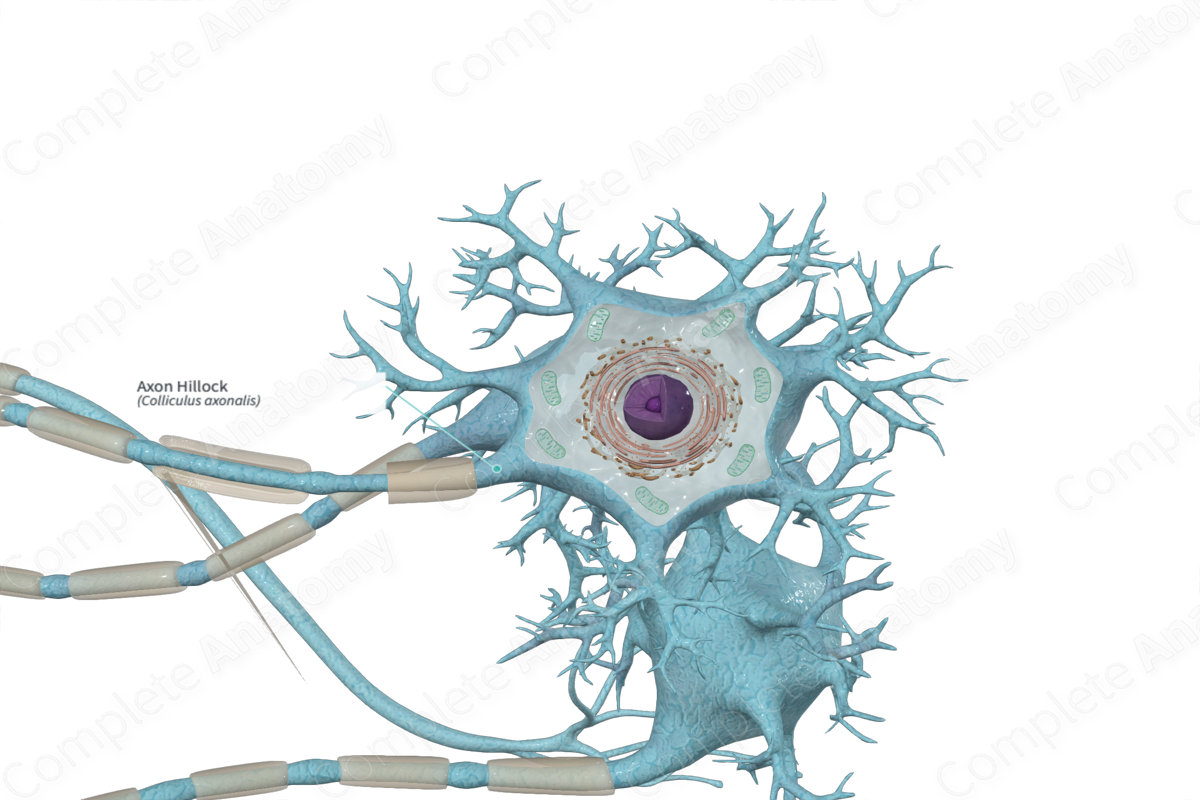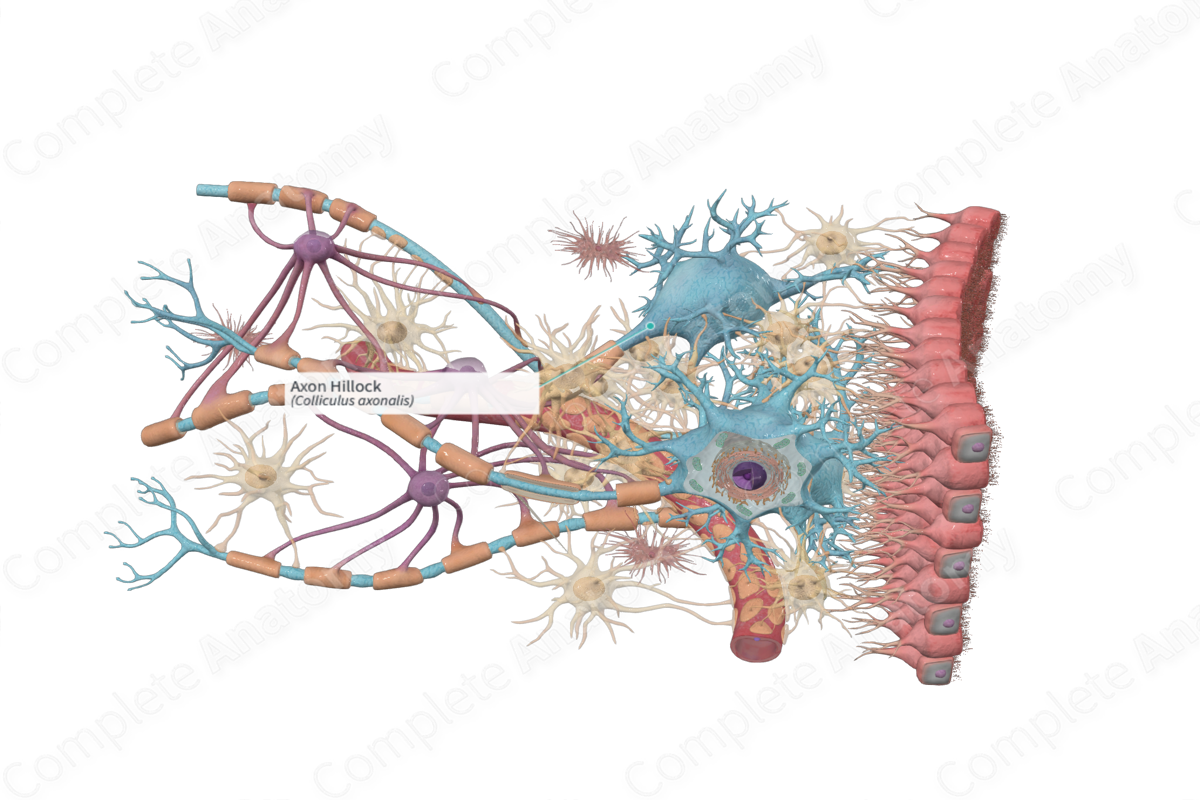
Quick Facts
The axon hillock is the conical expansion of an axon at its point of attachment to the body of the nerve cell (Dorland, 2011).
Structure and/or Key Features
The initial segment of the axon arises from the axon hillock which is a pyramidal-shaped region of the cell body lacking ribosomes, endoplasmic reticulum, and the Golgi complex. Smaller cytoplasmic organelles such as microtubules, intermediate filaments, mitochondria, and vesicles pass from the axon hillock to the axon.
The axon hillock is a useful landmark to distinguish an axon from a dendrite in microscopic preparations.
Anatomical Relations
The axon hillock is the region of the nerve cell body where the initial segment of the axonal process originates.
Function
An action potential is stimulated by impulses carried to the axon hillock.
References
Dorland, W. (2011) Dorland's Illustrated Medical Dictionary. 32nd edn. Philadelphia, USA: Elsevier Saunders.

